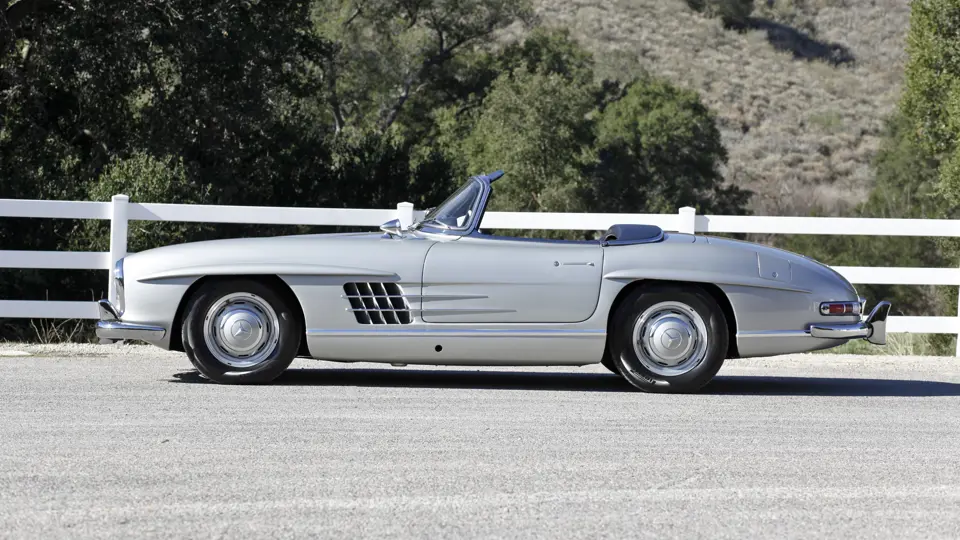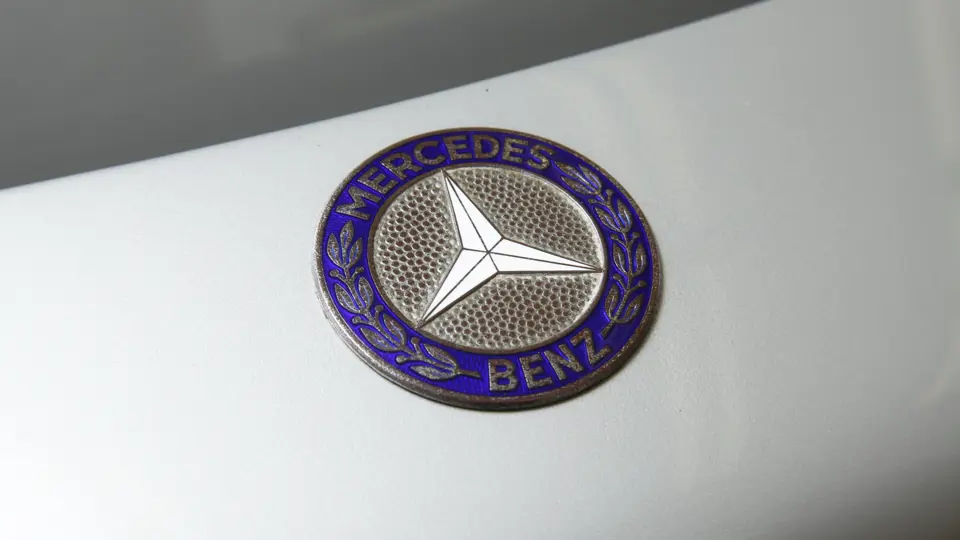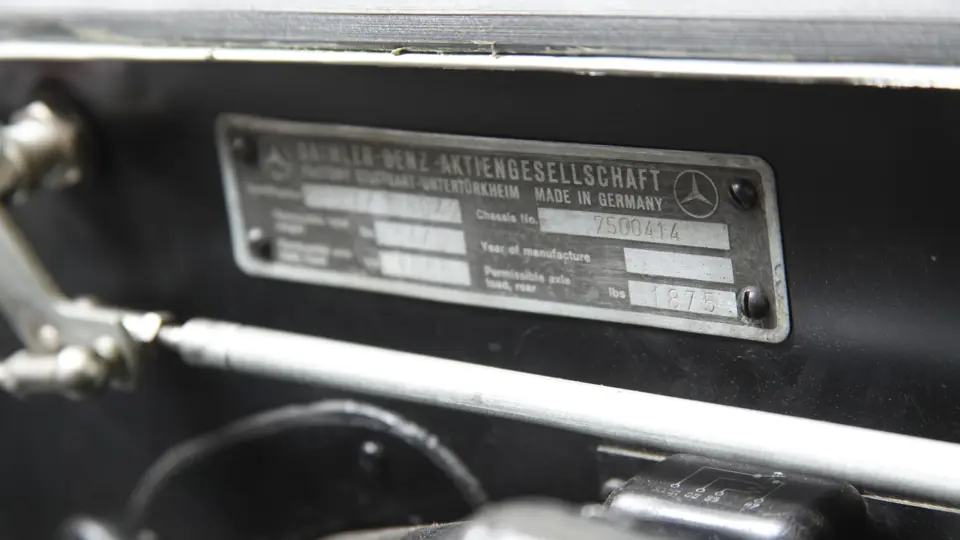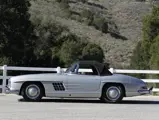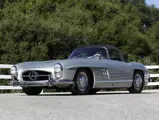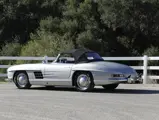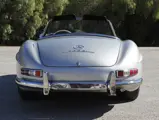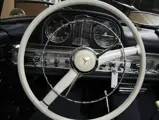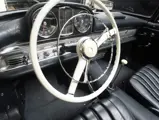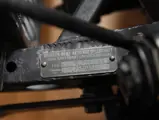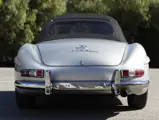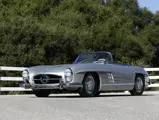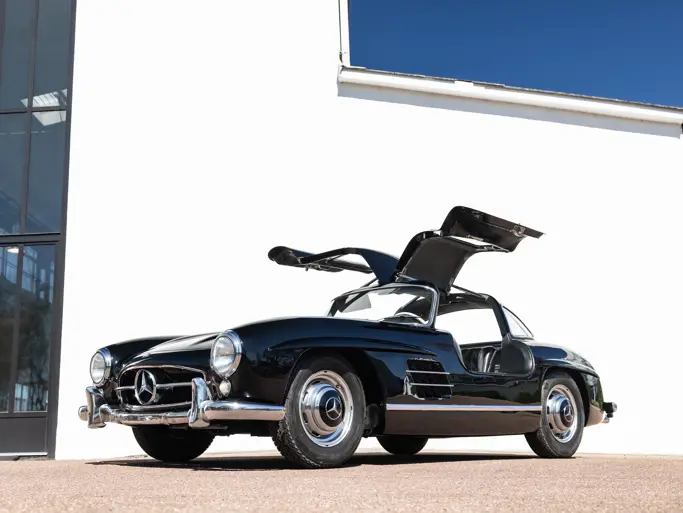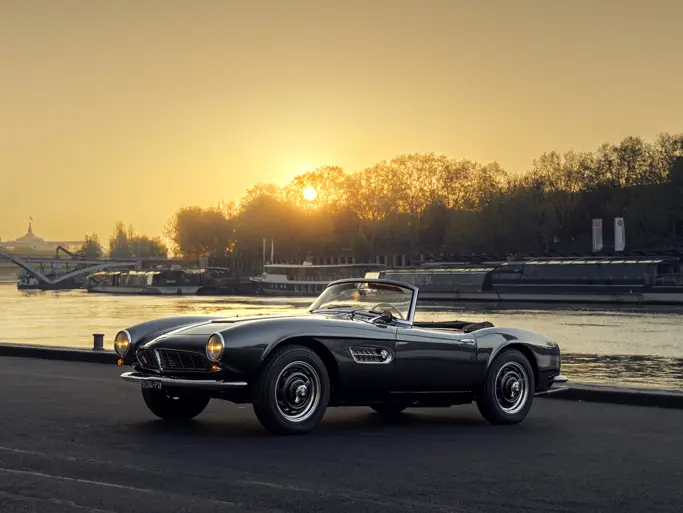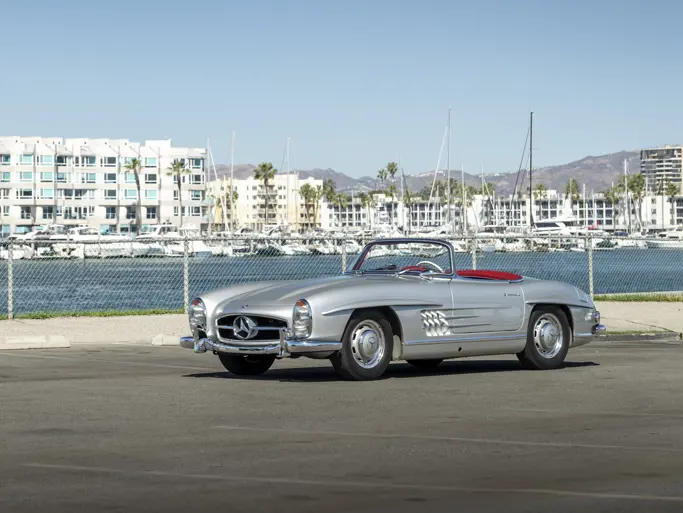2,996 cc overhead cam inline six-cylinder engine, four-speed manual transmission, coil spring independent front suspension, coil spring swing axle rear suspension, and four-wheel drum brakes. Wheelbase: 94.5"
• Amazing original condition
• 50,000 miles indicated
World War II dealt Daimler-Benz a serious blow. At war’s end its plants were largely rubble, and its passenger car line consisted only of the prewar 170V, a modest middle-class car that had been the best-seller during the 1930s.
The company waited out the luxury market until 1951, when the Mercedes-Benz 300 was introduced at the first postwar Frankfurt Motor Show. Built on a 120-inch wheelbase, the 300 was powered by a 2,996-cc overhead-cam six and available as a sedan or four-door convertible. The 300 quickly became the state limousine of the Federal Republic of Germany, particularly favored by Chancellor Konrad Adenauer during his administration, which lasted until 1963. These cars are known as “Adenauer Mercedes” to this day.
Racing also languished at Mercedes after the war, but within five years a competition car was developed, using many parts from the 300. The engine was given three carburetors and a new camshaft, and breathing was improved. To accommodate a low body, the engine was canted 45 degrees to the right. Transmission and axles came from the production 300, but the chassis and body were all new. Designed mainly by chief engineer Rudolf Uhlenhaut, the car was built on a tubular space frame and clothed in aluminum. The configuration of the space frame prevented low sills, so hallmark gull-wing doors, pivoting upward, were adopted in place of a conventional forward-hinged arrangement.
Christened “300SL,” the SL for Sport-Leicht (Sports Light), a team of cars was entered in the 1952 Mille Miglia, finishing second and fourth. This promising result was followed by a 1-2-3 sweep in the Berne Grand Prix and, six weeks later, first and second at Le Mans. A 1-2-3-4 finish at Nürburgring and a 1-2 victory in the Carrera Panamericana in Mexico followed, the latter bringing Mercedes to the attention of Americans.
Among American cheerleaders was Max Hoffman, the New York importer. Hoffman saw a market for a road-going version of the 300SL and ordered 1,000 cars. The production 300SL debuted at the International Motor Sports Show in New York City in January 1954. The 300SL name was retained, invoking the fame of the competition cars; internal Mercedes nomenclature designated the new car W198, its predecessor having been W194.
It differed in many respects from its competition forebear. The chassis and body were heavier, and the skin was now made of steel, with aluminum hood, doors and trunk lid. To compensate for the additional weight, the engine was made correspondingly more powerful, developing 215 bhp thanks to a direct fuel-injection setup, the first ever on a gasoline-powered car. Top speed was 145-160 mph, depending on the axle ratio, making it the fastest production car of its day. In all, 1,400 coupes were sold between 1954 and 1957, about 80 percent of them in the United States.
As the coupe was phased out, a new roadster model was created, introduced at the 1957 Geneva Salon. This concept had been previewed in 1955 with the appearance of the 190SL. An open two-seater with styling cues from the 300SL, the 190SL used the 1,897-cc four-cylinder engine of the 190 sedan.
To make the 300SL a roadster, the gull-wings were dispensed with and the chassis redesigned to accommodate more conventional doors. The headlights were changed, the grille was made smaller, and a chrome molding was added below the doors. The new chassis was heavier, so the engine was given a new camshaft and higher compression, good for another 20 bhp. The rear suspension was redesigned, with a compensating spring added to reduce oversteer in the single-jointed swing-axle arrangement.
Although not as aerodynamic as the gull-wing coupe, the 300SL roadster was still one of the fastest cars on the road, capable of 155 mph without complaint. Production continued into early 1963, by which time, with 1,858 built, it had proved more popular than the coupe.
A remarkably original example, this silver-grey 300SL roadster shows fewer than 50,000 miles. It takes close examination of the paint and brightwork to discover evidence of aging, and the leather is similarly pristine. The luggage compartment is immaculate, and the original tool kit comes with the car. According to the 300SL Roadster Register of the Gull Wing Group, the car was owned at some point in the 1970s by Roger Worthington of Hagerstown, Maryland.
Clearly a 300SL for the connoisseur of originality, this car is powerful, iconic and beautiful. One of 618 built in 1957, it will be of great appeal to the discriminating collector.

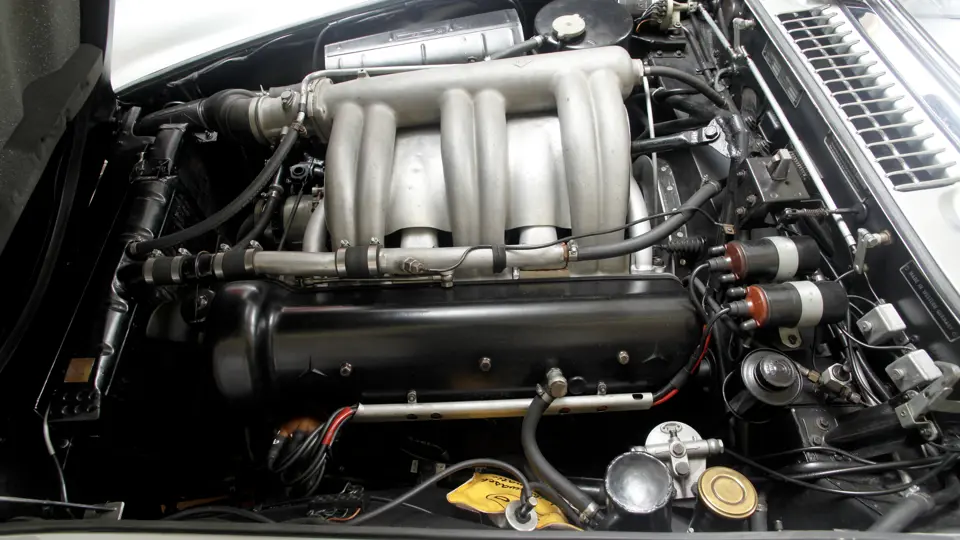
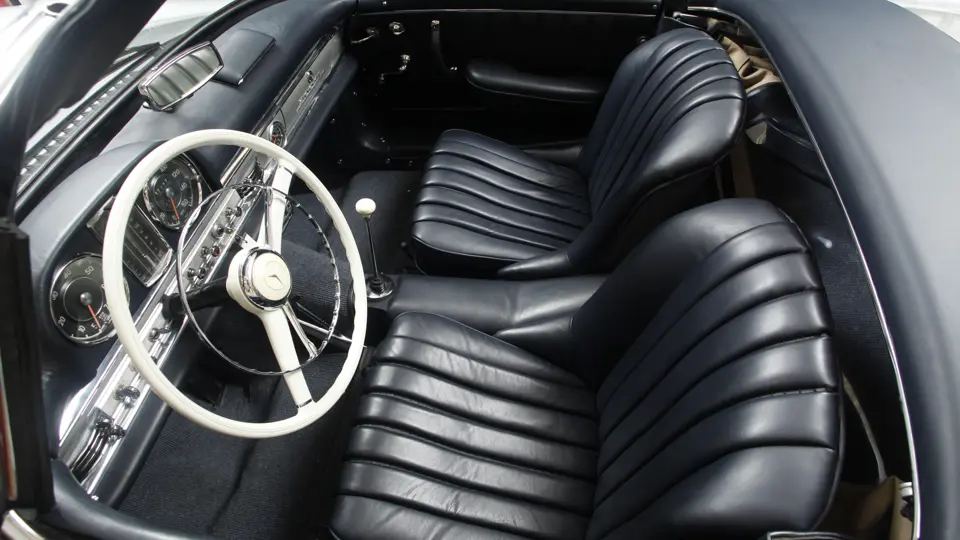


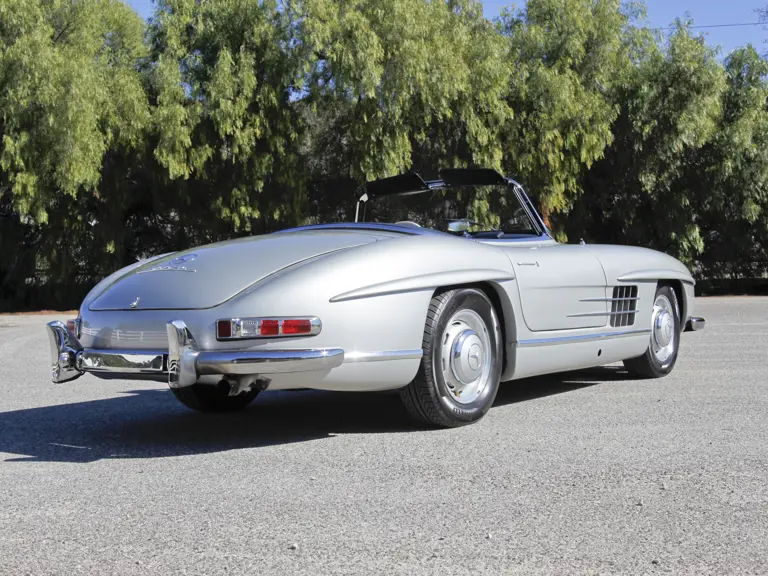
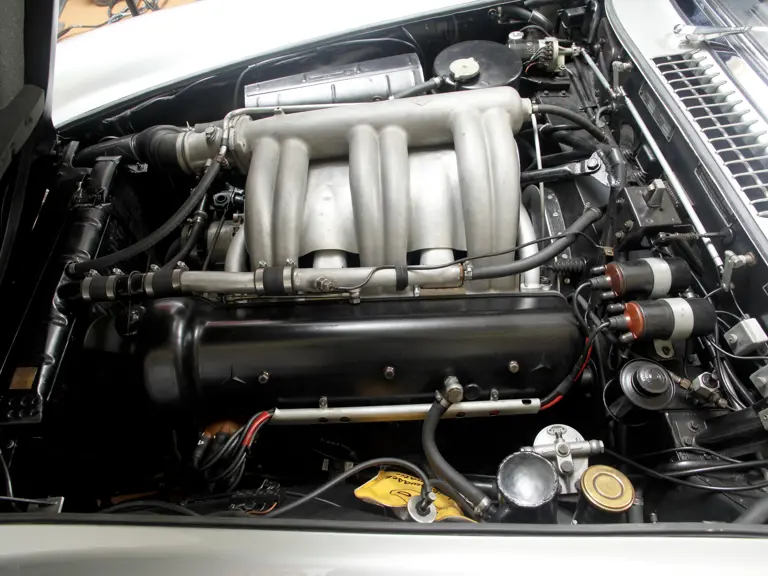
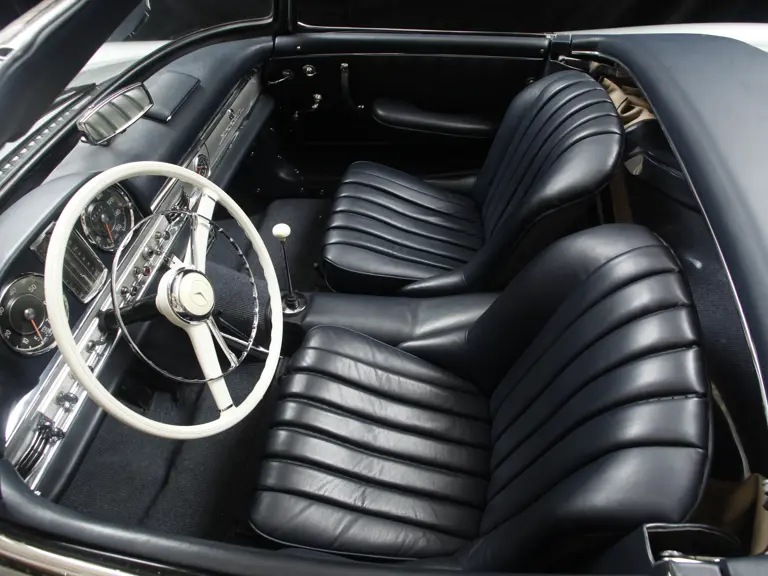
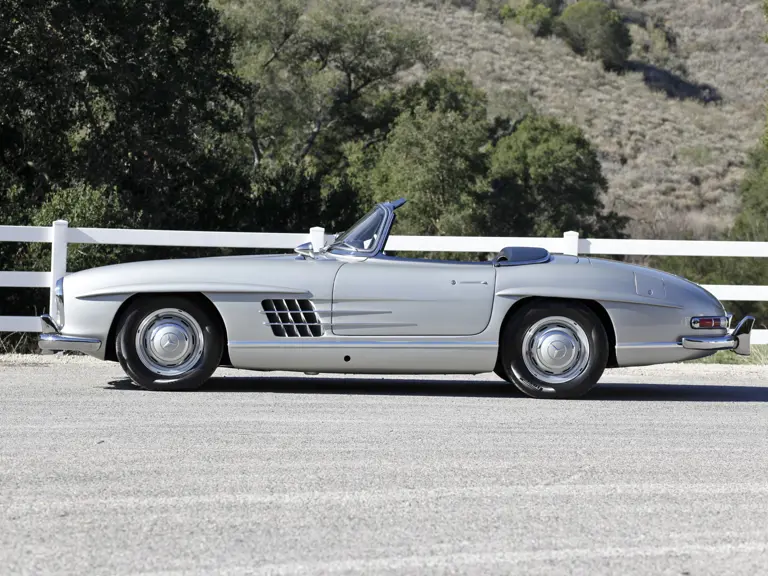

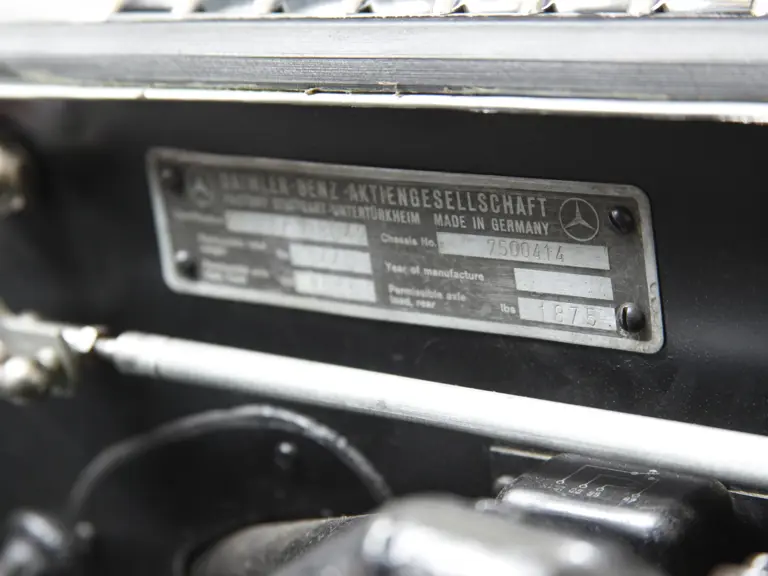

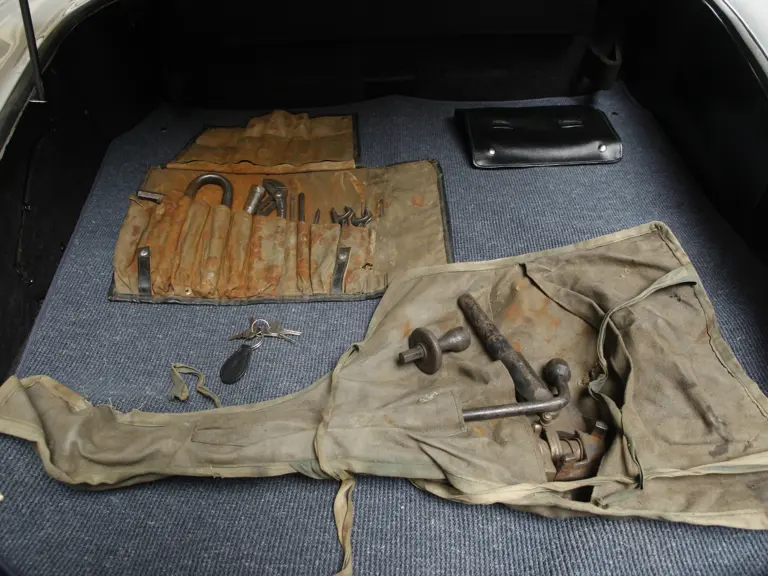
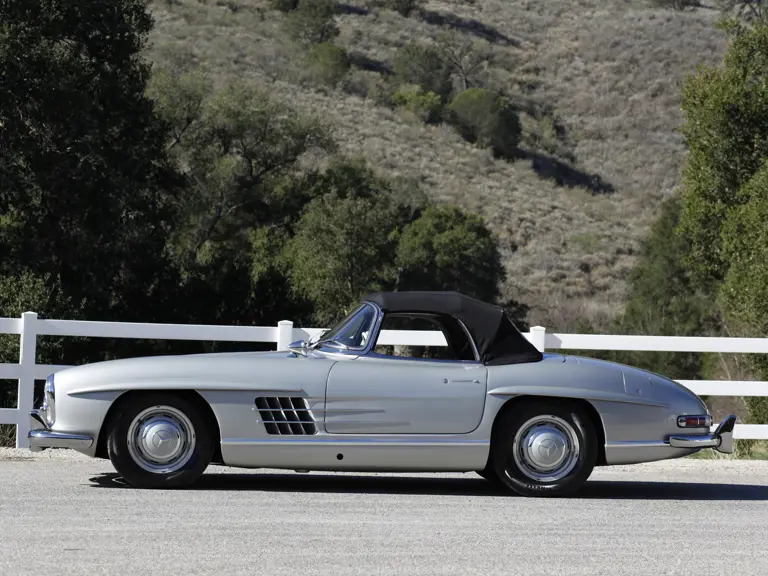
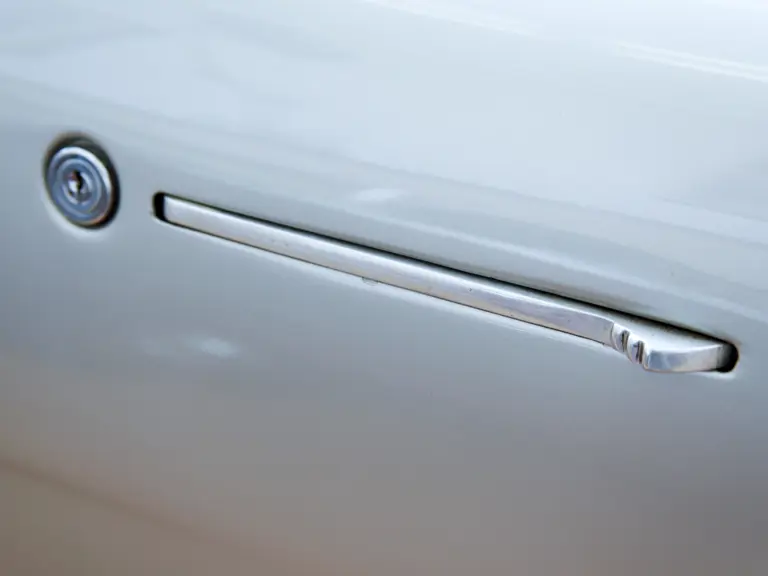


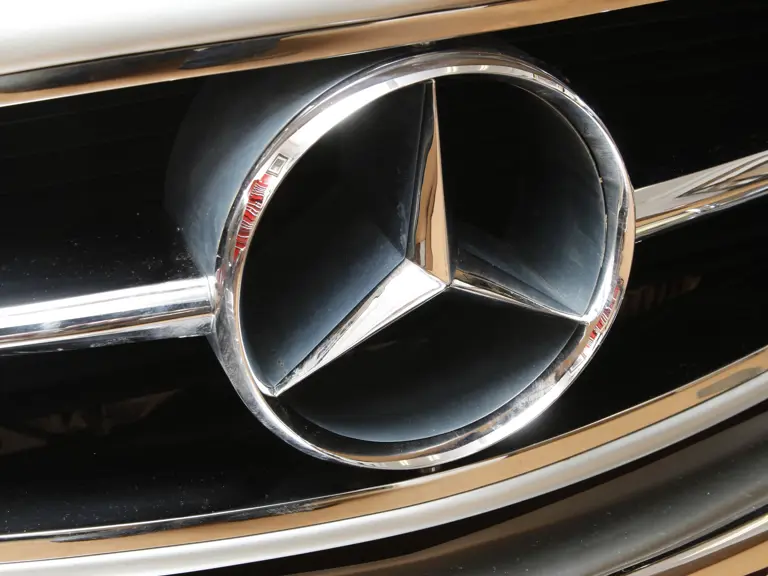
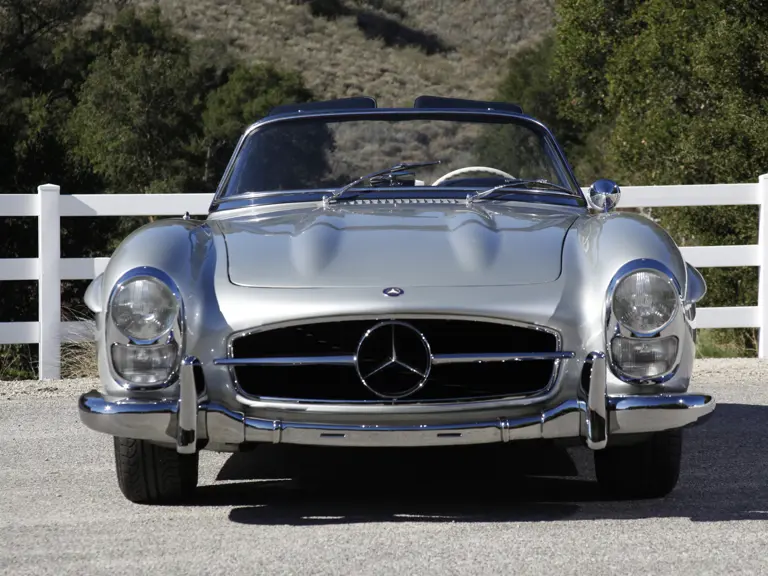
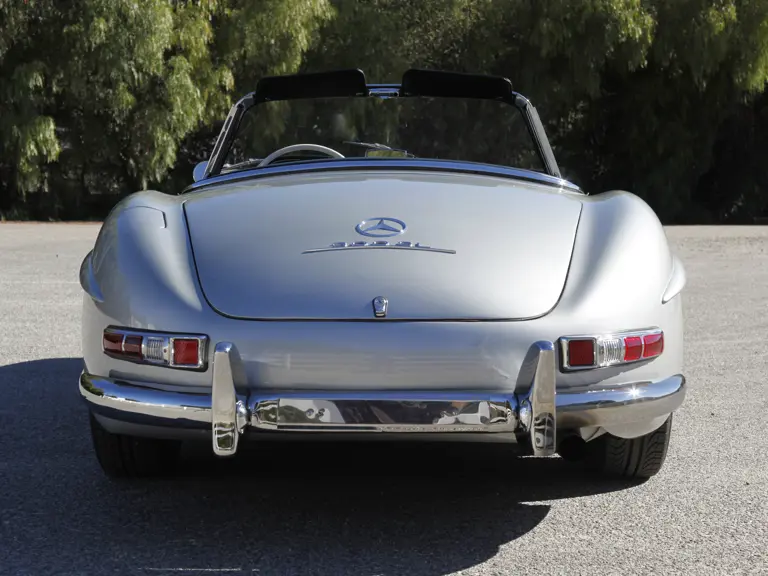
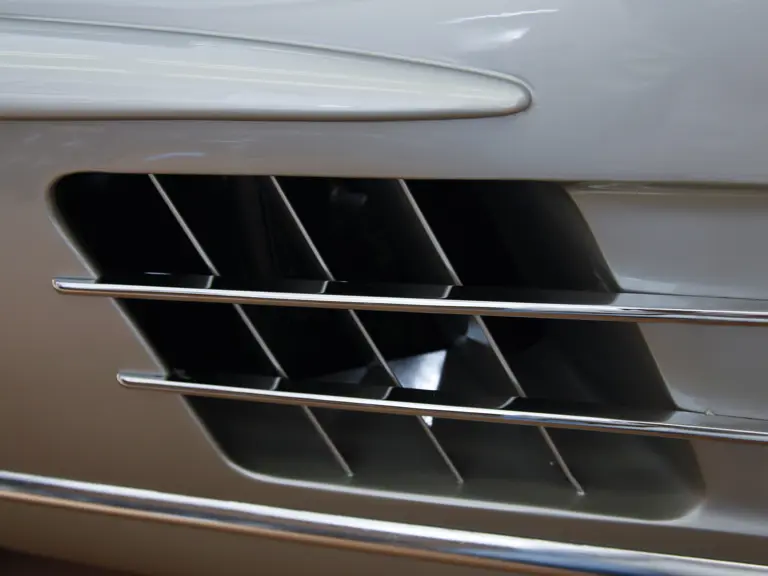

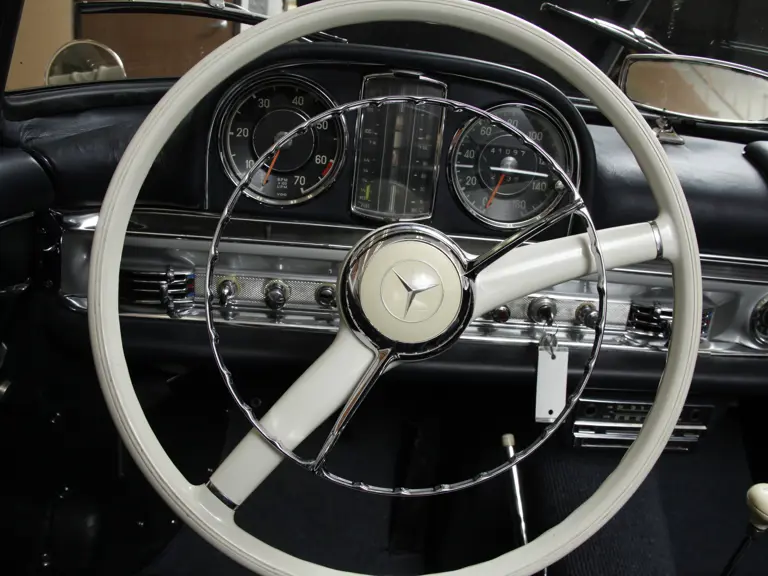
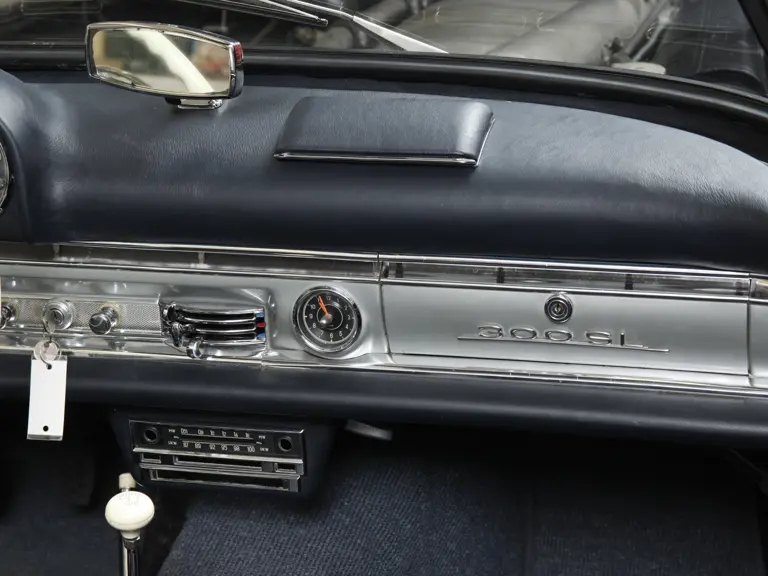
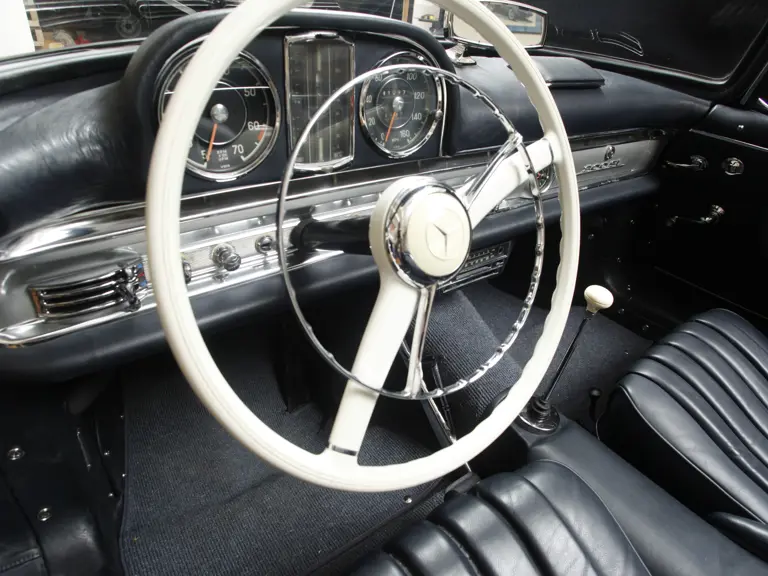
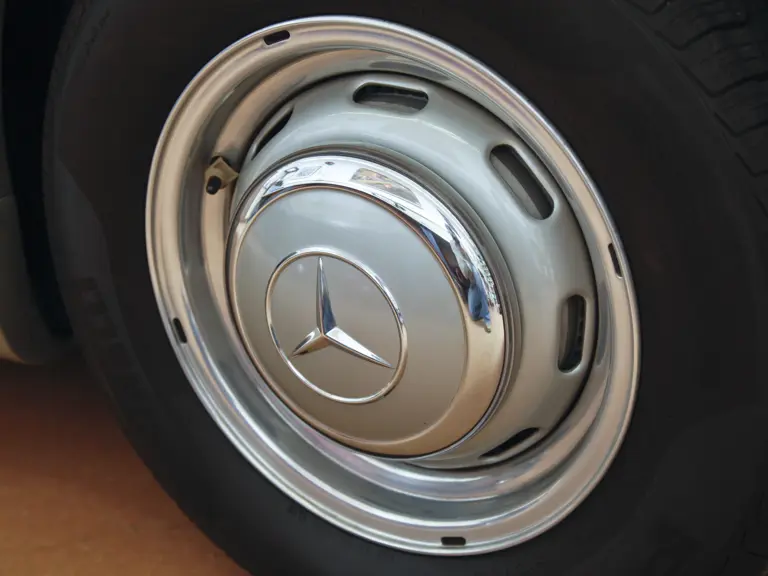
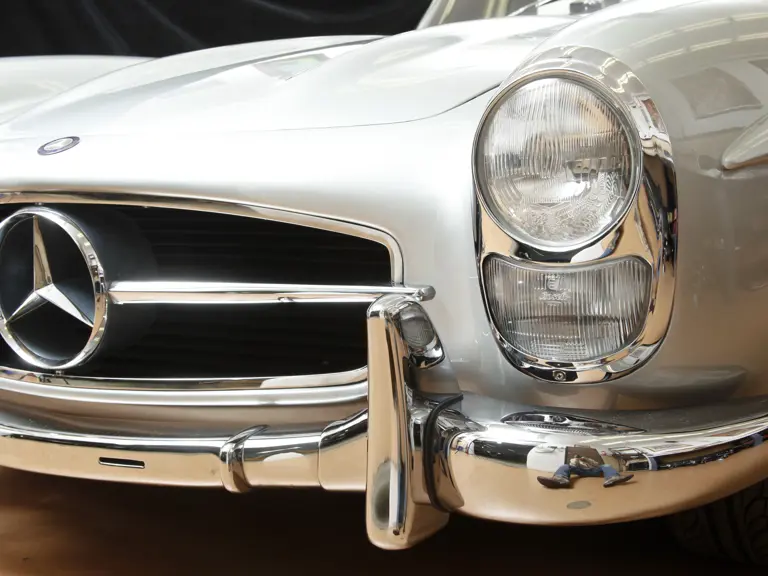

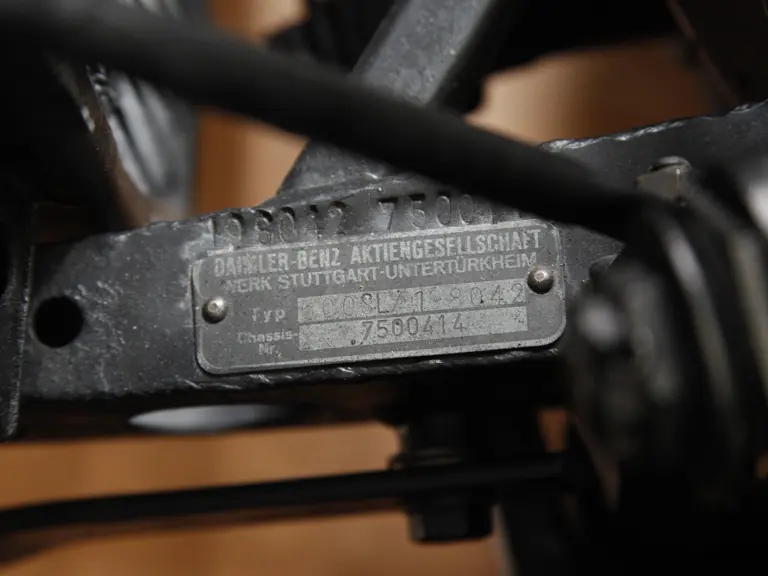
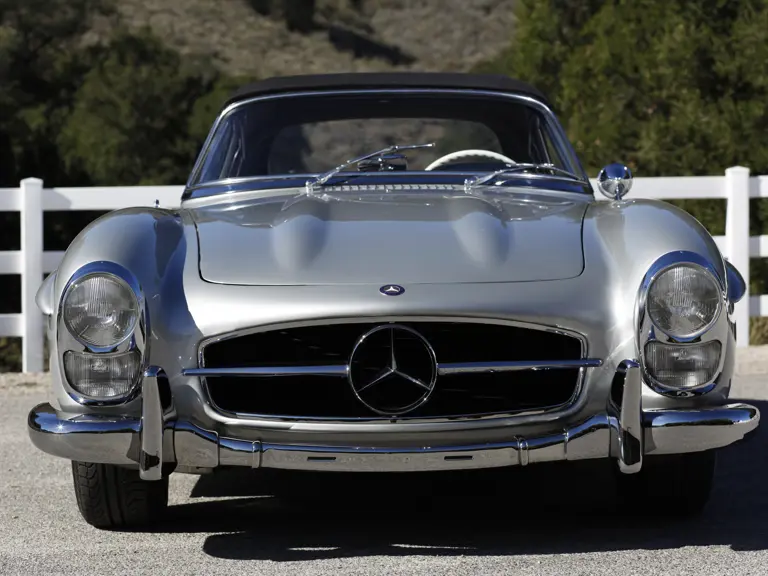
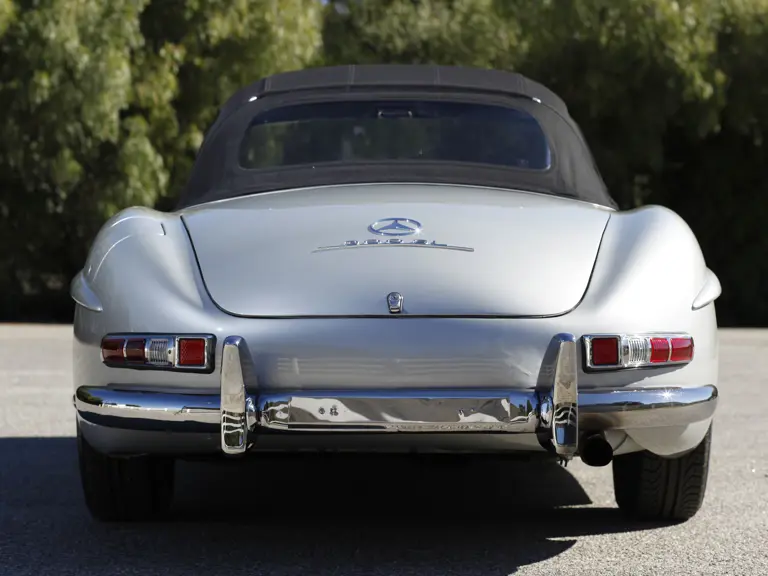
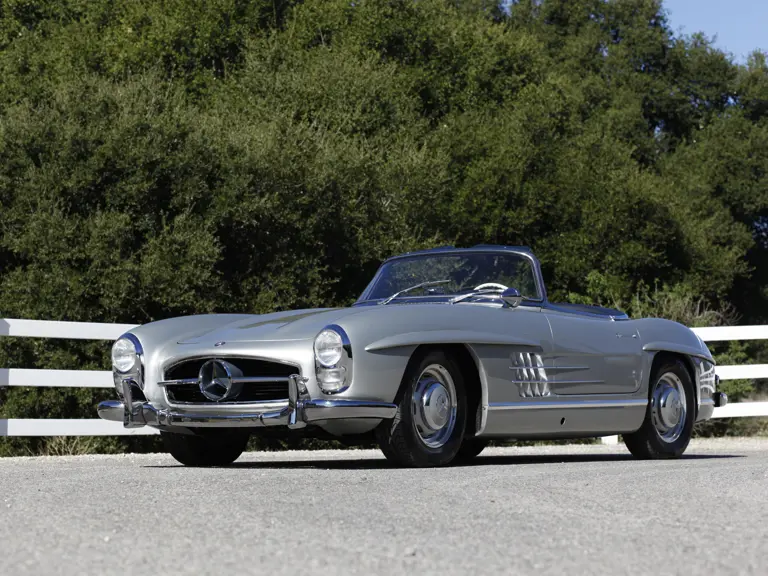
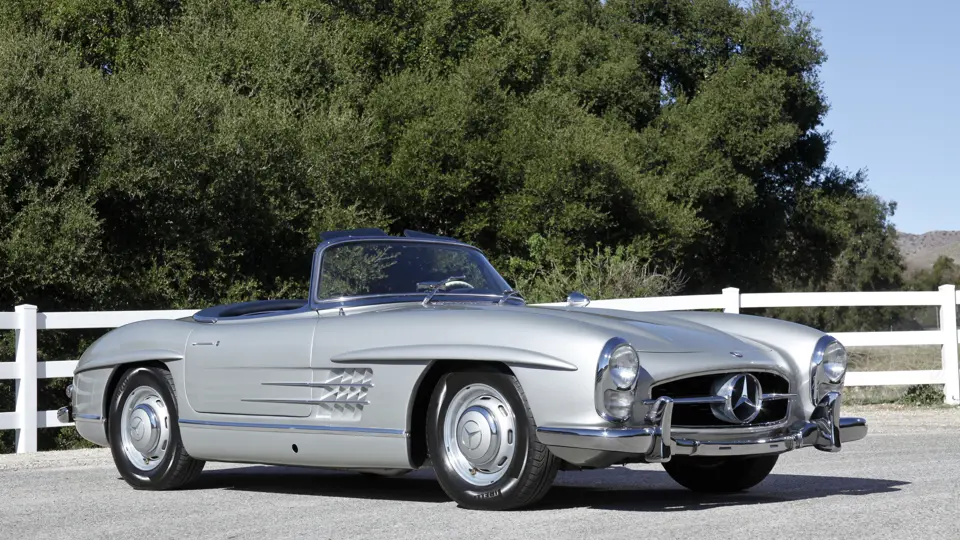
 | Amelia Island, Florida
| Amelia Island, Florida
